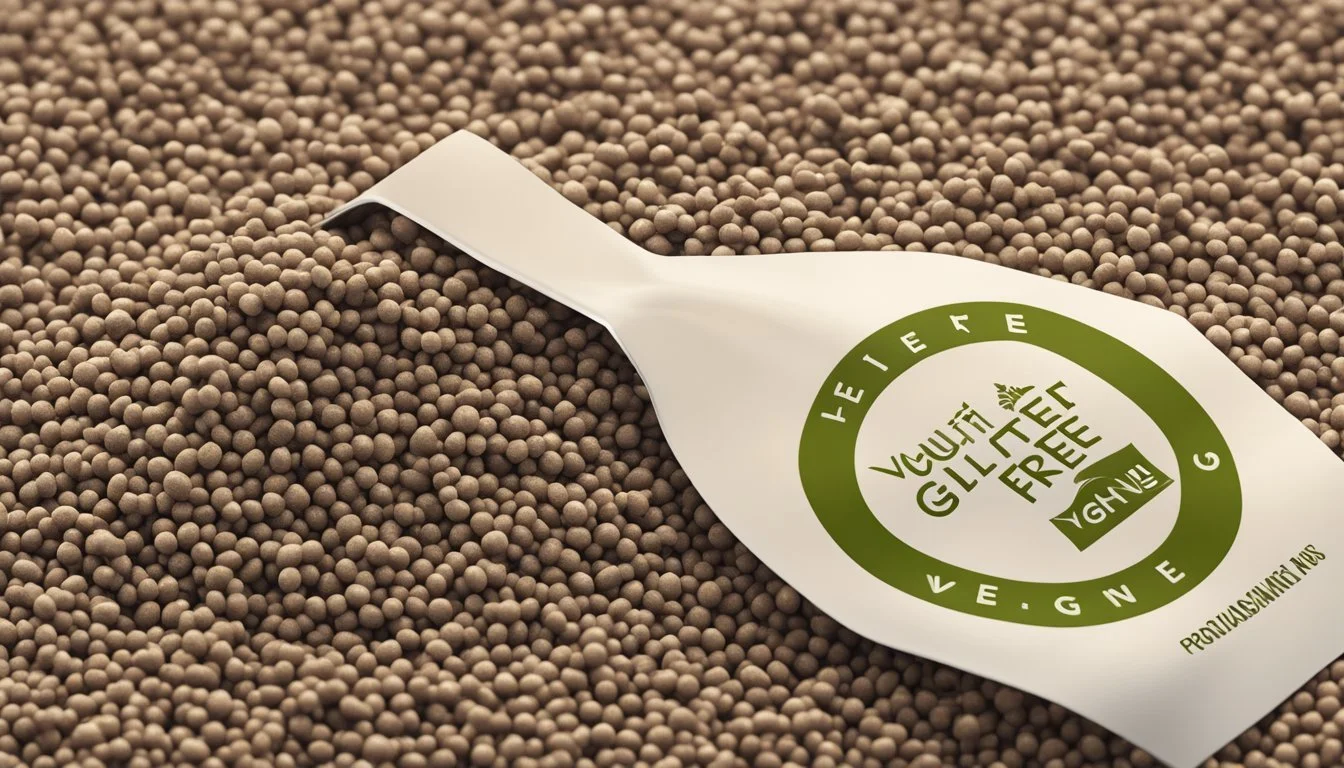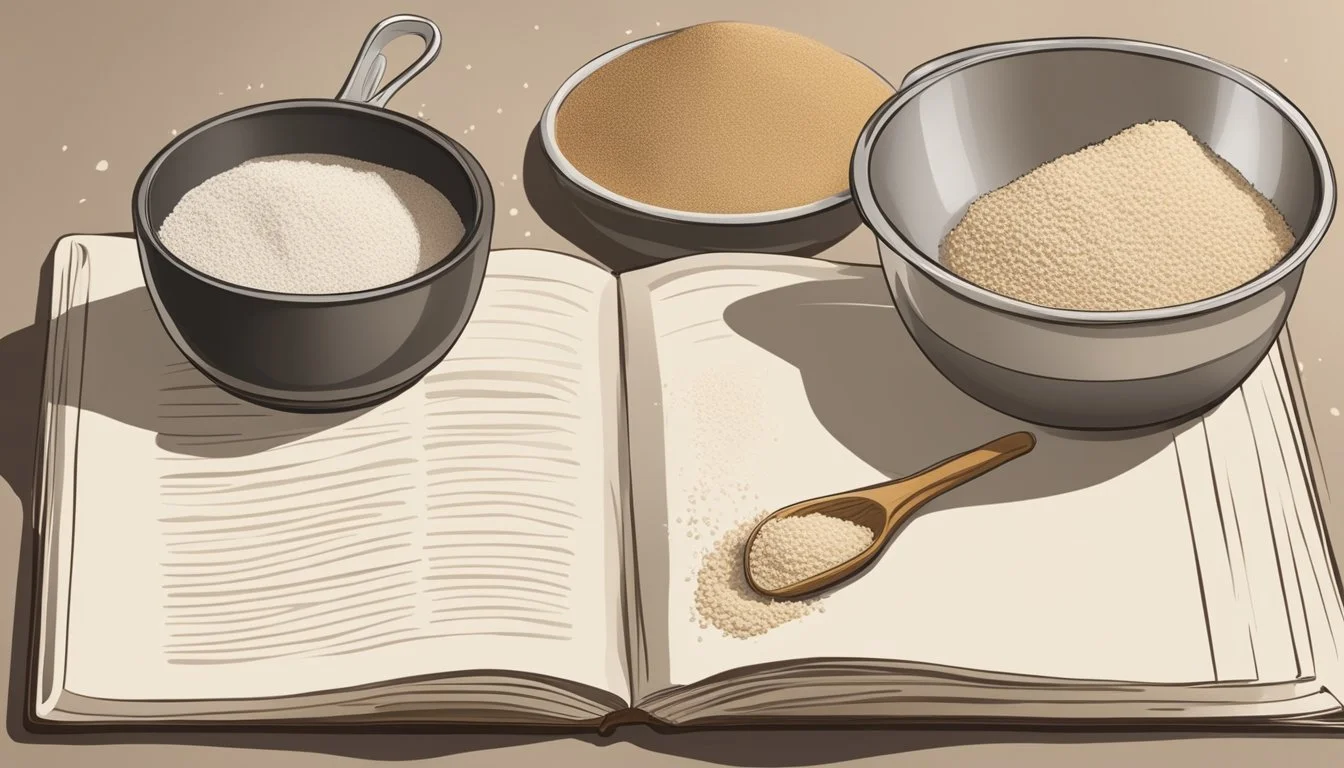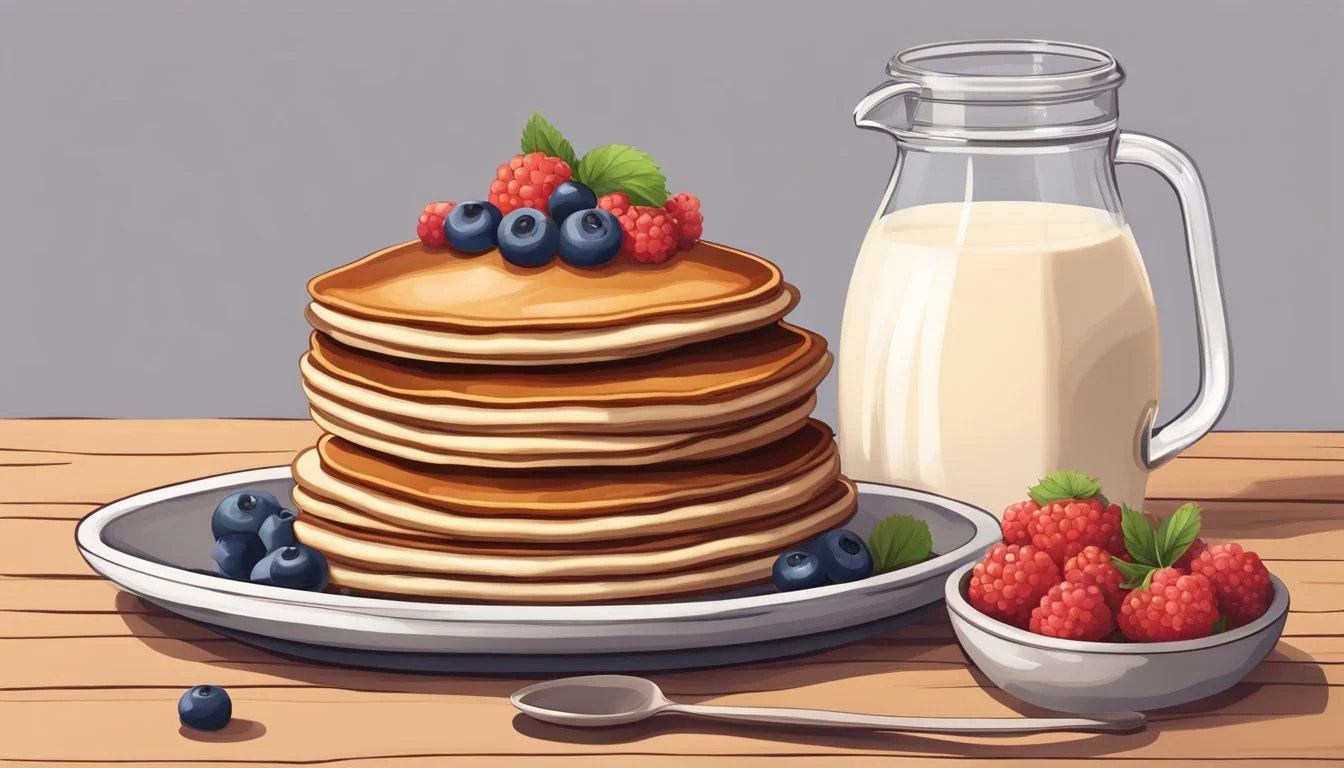Is Buckwheat Vegan?
Unraveling the Truth About This Versatile Seed
Buckwheat, despite its name, is not related to wheat and is in fact a completely gluten-free grain-like seed, which makes it an ideal food choice for those adhering to a vegan diet and those with gluten sensitivities or celiac disease. Its nutritional profile is commendable; rich in antioxidants, dietary fiber, and essential amino acids, buckwheat stands out as a nutritious staple that can be included in various meals, from breakfast pancakes to dinner dishes.
Vegans can benefit significantly from incorporating buckwheat into their diets due to its versatility and health benefits. It can be found in different forms such as flour, groats, or noodles, known as soba, and can be used to craft an array of culinary delights that cater to plant-based dietary preferences. Whether one is creating savory dishes like roasted buckwheat with vegetables or sweet options like buckwheat breakfast cakes, this pseudograin is well-suited to vegan cooking.
Therefore, the suitability of buckwheat for a vegan diet is clear. It is not only inherently vegan, being a plant-based product, but also a nutrient-dense food that enhances vegan cuisine both in terms of flavor and nutritional value. With growing interest in healthy, sustainable eating patterns, buckwheat's popularity among vegans is likely to continue rising.
What Is Buckwheat?
Buckwheat, despite its name, is not related to wheat and is naturally gluten-free. It is considered a pseudograin, meaning that it is a seed consumed similarly to grains. Cultivated for its triangular seeds, buckwheat has a robust nutrient profile. It is coveted not only for being a versatile ingredient but also for its health benefits.
Buckwheat seeds consist of two parts: the hull, which is inedible, and the groat, which is the inner kernel. Groats can be consumed whole or can be ground into flour. Buckwheat flour is a favored ingredient for those with gluten sensitivities or celiac disease, providing a safe and nutritious alternative to traditional wheat flour.
Nutritional Highlights:
Fiber: Buckwheat is a great source of dietary fiber.
Protein: It contains high-quality protein with all essential amino acids.
Gluten-Free: Ideal for gluten-free diets.
Uses in Cooking:
As Flour: Ideal for pancakes, noodles, and baking needs.
Groats: Can be used whole in recipes like porridge or salads.
Not only is buckwheat favored for its nutritional content but also for its hearty, nutty flavor. It serves as an excellent base in vegetarian and vegan dishes, contributing to satiety and nutrient density. Buckwheat is adaptable across various culinary traditions, enjoyed as a staple food in many cultures worldwide.
Is Buckwheat Vegan?
Buckwheat, despite its name, is not related to wheat nor is it a grain; it is a seed. As such, buckwheat fits comfortably within a vegan diet, which excludes all animal products. Buckwheat is a versatile ingredient that can be used in a variety of dishes, including breakfast options. It serves as a gluten-free alternative to traditional grains and is celebrated for its high fiber content and essential amino acids.
Vegans can enjoy buckwheat in many forms, such as groats, flour, and noodles, commonly known as Soba. When preparing a simple vegan breakfast, buckwheat can be transformed into hearty pancakes or a savory kasha dish. Here's how it can be incorporated:
Buckwheat Flour: It can be used to make vegan pancakes. Just mix it with plant-based milk and other vegan-friendly ingredients.
Buckwheat Groats: These can be cooked similarly to oatmeal or used in salads.
Soba Noodles: They're perfect for a quick and easy vegan lunch or dinner.
Typical vegan breakfast recipes using buckwheat are not only simple to create but also nutritious. Buckwheat pancakes are a popular choice; they offer a nutty flavor and a satisfying texture that pairs well with sweet or savory toppings.
In summary, buckwheat is a food item that is both vegan and beneficial for those seeking plant-based nutritional options. It offers diversity in meal planning, especially for vegan breakfasts, giving energy and nutrition to support a healthy lifestyle.
Nutritional Benefits of Buckwheat
Buckwheat is a highly nutritious plant protein source that is not only rich in fiber but also a powerhouse of essential amino acids. As a gluten-free seed, buckwheat caters to a variety of dietary preferences, including vegan diets.
Protein Content: It boasts a substantial protein profile, with around 13 grams per 100 grams of buckwheat, which includes all twelve amino acids essential for human health. This makes it an excellent plant-based protein choice for building muscle and repairing tissue.
Fiber Factor: With about 10 grams of dietary fiber per 100 grams, buckwheat contributes to digestive health, helping maintain bowel regularity and potentially aiding in weight management.
Vitamins and Minerals: Buckwheat is laden with a range of vitamins, including B vitamins like niacin, riboflavin, and B6, which play a role in energy metabolism and cognitive function. It also harbors a variety of minerals such as magnesium, phosphorus, zinc, iron, and copper.
Antioxidant Properties: The seed includes flavonoids like rutin and quercetin, known for their antioxidant properties that help fight inflammation and protect cells from oxidative stress, thereby promoting overall health.
In addition to these attributes, buckwheat provides a gluten-free alternative that can be safely consumed by individuals with celiac disease or gluten sensitivities. Its versatility in the kitchen allows it to be incorporated into numerous recipes, enhancing the nutritive value of vegan meals.
Vegan Buckwheat Recipes
Buckwheat, a highly nutritious pseudocereal, is a staple ingredient in many vegan recipes due to its versatility. Below are various ways to incorporate buckwheat into vegan meals, including fluffy pancakes and hearty main courses.
Vegan Buckwheat Pancakes
Ingredients crucial for making vegan buckwheat pancakes include buckwheat flour, non-dairy milk like almond or oat, a sweetener such as maple syrup or agave, baking powder, and often, ground flaxseed as an egg substitute. Resulting pancakes can boast a light and fluffy texture, serving as a fiber-rich and satisfying breakfast. A popular variation is blueberry buckwheat pancakes, where fresh blueberries are folded into the batter for natural sweetness and a burst of flavor.
Breakfast Options with Buckwheat
Aside from pancakes, buckwheat can be utilized in an array of vegan breakfast recipes. Common forms include buckwheat groats which can be soaked overnight and added to smoothies or porridge. Alternatively, groats may be toasted and mixed with fruits like banana to increase the vegan protein content. Such breakfasts are not only healthy but also flexible, allowing for mixing and matching with various fruits and sweeteners to suit different tastes.
Cooking Techniques for Buckwheat
The texture of buckwheat is greatly influenced by cooking techniques. For a firmer bite, toasting buckwheat groats before simmering can add a crunchier texture, suitable for salads or as a rice substitute. Steaming or boiling buckwheat can result in a softer consistency, perfect for integrating with vegetables. The key to delicious buckwheat dishes lies in maintaining its nutty flavor while achieving the desired texture.
Buckwheat as Part of Main Courses
Buckwheat's robust profile allows it to act as the foundation for many vegan lunch and dinner recipes. It can replace grains in a vegetarian stew or be used as a base for a warm salad mixed with roasted vegetables, (What wine goes well with roasted vegetables?) drizzled with olive oil, seasoned with garlic, salt, and herbs. There are countless vegan recipes leveraging buckwheat's versatility, from rich casseroles to light and nutritious buddha bowls.
Gluten-Free Aspects of Buckwheat
Buckwheat, despite its misleading name, is not related to wheat and is indeed gluten-free. It belongs to the group of pseudograins as it's a seed consumed as a grain but doesn't grow on grasses. People with celiac disease or gluten sensitivity can safely consume buckwheat as part of their diet.
The nutritional profile of buckwheat is impressive—it's rich in minerals and plant compounds, which contribute to its health benefits. Its absence of gluten means that the grain naturally accommodates gluten-free dietary needs, making it a suitable alternative for traditional wheat-based recipes.
Buckwheat in Gluten-Free Pancakes
One popular use of buckwheat in gluten-free cooking is in pancake recipes. Gluten-free buckwheat pancakes are praised for their delightful nutty flavor and can be both satisfying and healthy. Here's a simple breakdown:
Mix dry ingredients: Use buckwheat flour as the base.
Combine with wet ingredients: Add plant-based milk and, if desired, a vegan egg substitute.
Adjust consistency: For thinner pancakes, increase the liquid content.
Buckwheat's versatility extends beyond pancakes to include other gluten-free dishes such as crepes, noodles, and pastas, adding to its value in gluten-free cuisine. Its ease of use in cooking is another advantage, often requiring simple substitutions in standard recipes.
In conclusion, buckwheat's naturally gluten-free composition and nutritional benefits make it a sought-after ingredient in gluten-free cooking, offering a safe and healthy alternative for individuals avoiding gluten for health reasons.
Buckwheat's Role in Different Cuisines
Buckwheat is a versatile ingredient respected for its health benefits and simple, robust flavor. In vegan cuisine, it's a staple due to its rich nutrient profile and absence of animal products. Its inclusion in vegan recipes is seamless, as it effortlessly absorbs flavors, enhancing both the taste and the texture of dishes.
In Eastern Europe, buckwheat is synonymous with hearty, comforting food. Often seen in a traditional dish called kasha, buckwheat groats are toasted and cooked similarly to rice. The grain's ability to complement various ingredients makes it a popular choice for stuffing, side dishes, and as a base for flavorful stews.
Asian cuisines also embrace buckwheat, most notably with soba noodles in Japan. These noodles, made from buckwheat flour, showcase the grain's slightly nutty taste and are served either chilled with a dipping sauce or in a warming broth.
Versatility in Vegan Cooking:
Adds depth to both savory and sweet dishes
Enhances texture of plant-based meals
Contributes to a nutrient-rich diet
Eastern Europe:
Kasha: A quintessential recipe using toasted buckwheat
Serves as a filling, simple, and comforting meal
Asia:
Soba Noodles: Buckwheat flour-based and served in various forms
Buckwheat has carved out a significant niche in global cuisines. Its ability to fit into diverse dietary needs, from gluten-free to plant-based diets, underscores its global culinary appeal. It remains a healthy, simple food that maintains a confident position on the world's plate.
Selecting and Storing Buckwheat
When choosing buckwheat, one should look for grains that are free of moisture and have a uniform size and color. It is commonly available in its raw form known as buckwheat groats, or as kasha which is toasted. Organic and gluten-free options are also available for those with specific dietary preferences.
Storage of buckwheat is critical to maintain its quality and extend its shelf life. Ideally, buckwheat should be stored in a cool, dry place, such as a pantry. It is advisable to use an airtight container to keep out moisture and insects.
Here are a few storage tips:
Pantry: Place the airtight container in a pantry away from direct sunlight and sources of heat.
Shelf Life: Raw buckwheat groats, when stored properly, can last up to a year. Toasted buckwheat or kasha has a slightly shorter shelf life due to the oils released during the toasting process.
To further ensure the longevity of buckwheat, one might consider the following:
Using a container that is opaque to limit light exposure, which can degrade the quality over time.
Labeling the container with the date of purchase to keep track of its age.
By adhering to these storage recommendations, the integrity and nutritional value of buckwheat are best preserved, allowing for a fresher taste upon usage.
Customizing Buckwheat Dishes for Dietary Restrictions
Buckwheat, a highly nutritious seed, is inherently vegan and gluten-free, making it a versatile base for many dietary needs. To cater to varied restrictions, one can modify buckwheat recipes with ease.
For a vegan diet: Buckwheat is naturally vegan. Chefs may choose to incorporate a diverse range of vegetables or plant-based proteins — like lentils or tofu — to enhance the nutritional profile of the dish.
Gluten-free considerations: Those with celiac disease or gluten sensitivity can safely consume buckwheat as it does not contain gluten. However, it is crucial to ensure there is no cross-contamination during processing.
Dairy-free alterations: Traditional buckwheat dishes that call for butter can substitute with plant-based oils or margarines. Dairy-free cheese or nutritional yeast are also excellent for adding a cheesy flavor without actual dairy.
For an oil-free diet: People avoiding oil can cook buckwheat in water or vegetable broth and sauté vegetables with small amounts of broth instead of oil.
Reducing sugar content: Buckwheat itself is sugar-free. To maintain a sugar-free meal, avoid adding sweeteners or opt for natural ones like stevia or monk fruit extract.
Dietary Restriction Substitution Example Vegan Plant-based proteins Gluten-Free Ensure no cross-contamination Dairy-Free Plant-based oils or margarines Oil-Free Cook with broth Sugar-Free Use natural sweeteners
Users can confidently adapt buckwheat to numerous diets without compromising on taste or nutrition. The neutral taste profile of buckwheat complements a variety of ingredients, allowing for creative and personalized meal preparation.
Pairing and Toppings for Buckwheat Dishes
When one thinks of buckwheat, a variety of vegan-friendly pairings and toppings may come to mind that enhance its naturally nutty flavor. Buckwheat's versatility allows it to be paired with a range of ingredients that cater to both sweet and savory preferences.
For a sweet approach, buckwheat pancakes can be uplifted with slices of banana or a handful of blueberries for a burst of natural sweetness. Adding a dash of cinnamon and a drizzle of nut butter or vanilla soy milk can elevate the taste profile. If decadence is the goal, a spoonful of vegan butter and a sprinkling of chocolate chips can transform a morning staple into a delightful treat.
In savory dishes, buckwheat can be topped with an assortment of vegetables and spices to cater to the taste buds. One might find roasted vegetables such as sweet potatoes paired with chickpeas and sautéed kale, creating a medley of flavors and textures. Fresh herbs and a dollop of vegan spreads, like avocado cream, enhance the dish with layers of taste.
Consider the following highlights for a well-rounded buckwheat dish:
Sweet Toppings:
Fresh fruit: banana slices, blueberry bursts
Confections: chocolate chips, dollops of peanut butter
Spices: a pinch of cinnamon for warmth
Savory Toppings:
Vegan Proteins: chickpeas, edamame beans
Greens: kale, avocado slices
Nuts & Seeds: sliced almonds, Everything but the Bagel seasoning
Buckwheat pairs seamlessly with a variety of plant-based milks, such as soy, almond, or oat, which can be used in both cooking the grain or as a creamy addition to finished dishes. Whether it's a rich nutty spread or the simplicity of fresh spices, buckwheat dishes can be tailored to satisfy a range of vegan dietary preferences while remaining deliciously hearty and fulfilling.
Alternative Ingredients in Buckwheat Preparations
When preparing buckwheat dishes, a variety of alternative ingredients can be used to accommodate dietary preferences, especially for those following a vegan diet. Choices in sweeteners and non-dairy milks allow for flexibility in taste and texture.
Sweeteners and Their Substitutes
In buckwheat porridge or baking, traditional sweeteners like sugar and maple syrup can be replaced with vegan alternatives to suit various flavor profiles and dietary needs. Agave is a popular substitute, providing a similar sweetness with a lower glycemic index. For a deeper flavor, consider coconut sugar or brown rice syrup. Here are options for sweeteners and their substitutes:
Maple Syrup: Natural, vegan sweetener with a distinct flavor; can be replaced by equal parts of agave or brown rice syrup.
Sugar: Regular cane sugar, while vegan, can be swapped for coconut sugar for its lower fructose content and slight caramel taste.
Agave: A sweetener produced from the agave plant, sweeter than sugar and honey, meaning you can use less to achieve the desired sweetness.
Non-Dairy Milks and Their Uses
Non-dairy milks are essential in vegan cooking, serving as a direct replacement for cow's milk without compromising on creaminess. Each non-dairy milk alternative brings its own unique flavor and nutritional profile to buckwheat dishes. For instance:
Almond Milk: Light with a hint of nuttiness, suitable for both sweet and savory buckwheat preparations.
Soy Milk: Packed with protein, offering a consistency closer to that of regular milk, good for creating a creamy texture.
Cashew Milk: Creamy and rich, slightly sweeter, perfect for thickening porridges or in baking.
Nut milks, in general, should be chosen based on the desired final product's taste and consistency, as they can vary significantly from water-thin to creamy like cow's milk.
Baking Tips for Buckwheat-Based Goods
When baking with buckwheat flour, it is important to understand that it is a gluten-free grain, making it a great option for those with gluten sensitivities. However, its lack of gluten means that it behaves differently from wheat flour in recipes.
Mixing: Due to the absence of gluten, it is beneficial to blend buckwheat flour with other flours such as whole wheat pastry flour to provide a balance in texture. For fully gluten-free options, mixing buckwheat with almond flour or oat flour can work well.
Proportions: One can consider replacing up to 25% of all-purpose flour with buckwheat flour to maintain stability while imparting the unique flavor that buckwheat offers.
Baking Powder and Baking Soda: These leaveners are essential in vegan and gluten-free baking to help the dough rise. Using an appropriate balance helps achieve the desired fluffiness.
Example: For pancakes, combining baking soda and baking powder with buckwheat flour will help create a desirable lift and airiness.
Oil: Adding oil helps add moisture to buckwheat goods, which is crucial since buckwheat can produce a drier crumb.
Prep Time and Cook Time: As buckwheat absorbs liquids differently, one may notice variations in preparation and cooking time. Always gauge the dough's readiness rather than strictly adhering to the time mentioned in recipes.
Essential Equipment Utility Skillet For evenly cooking pancakes Lid To trap steam and cook thoroughly
Finally, for best results, one should monitor the batter or dough consistency and adjust the liquids or flours as necessary. This ensures that the texture of the baked goods is pleasing and not too dense or dry.
Health Considerations with Buckwheat
Buckwheat, despite its misleading name, does not contain wheat and is not related to traditional cereals. It is a gluten-free pseudograin, suitable for those with celiac disease or gluten sensitivities, and a favored food choice in vegan diets.
This pseudograin boasts a robust nutritional profile, rich in fiber and plant-based protein. The presence of fiber contributes to digestive health and can aid in maintaining a healthy weight by promoting a feeling of fullness. Additionally, the protein in buckwheat is of high biological value, containing all essential amino acids, which is particularly important for individuals following a vegan diet.
Nutrient Benefit Fiber Supports digestive health Protein Essential for muscle repair and growth Magnesium Contributes to bone health and energy production Potassium Necessary for heart function and muscle contraction
Consumers can incorporate buckwheat into their diets in various forms – as groats, flour, or noodles. Buckwheat flour offers an all-purpose flour alternative that can be used in many recipes ranging from pancakes to bread, making it a versatile ingredient.
It is worth noting that buckwheat is considered a healthy substitute because it is nutrient-rich and can fit into multiple dietary requirements, including vegan and gluten-free lifestyles. Thus, it serves not only as a food that promotes inclusivity in dietary choices but also contributes positively to overall nutritional intake.
Tips for Making Buckwheat Pancakes
When preparing buckwheat pancakes, there are several steps involved to ensure the pancakes have the right texture and flavor. It's important to mix the dry ingredients thoroughly before introducing the wet ingredients. Start with buckwheat flour and add baking powder as a leavening agent to give the pancakes a lift.
For those seeking a quick and easy breakfast solution, buckwheat pancakes are a great choice. They can be made with minimal ingredients and can also be prepared in advance for meal prep. Typically, one can make several servings in a single batch.
Wet Ingredients Quantity Plant-based milk 1 cup Maple syrup/Agave 2 tablespoons Vanilla extract 1 teaspoon Coconut oil As required for cooking
Those who prefer their breakfast on the sweeter side can opt for natural sweeteners like maple syrup or agave. Incorporating vanilla extract adds a subtle aromatic component to the pancakes.
One can also modify the batter's consistency by adjusting the amount of water or plant-based milk. For a rich result, replace water with almond or soy milk. To cook the pancakes, use a non-stick pan with a small amount of coconut oil to prevent sticking and to add a slight coconut essence.
For those with hectic mornings, leftover pancakes can be stored. Simply allow them to cool, then place in a container or wrap them individually. They freeze well and can be reheated for a quick and nutritious breakfast. Place the leftovers in the freezer, and they will be ready for a quick reheat on busy mornings.
Sustainability and Buckwheat Farming
Buckwheat stands out in sustainable agriculture for its robust growth and environmental benefits. Farming methods employing buckwheat often emphasize its rapid canopy growth and the presence of phenolic compounds, which not only have antioxidant benefits but also possess allelopathic properties. These attributes contribute to buckwheat functioning effectively as a cover crop, improving soil health and providing a natural weed suppressant.
Quick Establishment and Growth
Emergence: Seedlings surface in under a week.
Soil Coverage: Between 40-80% within four weeks post-sowing.
Biomass: Generates around 200 g/m^2^ of shoot and root dry matter rapidly.
In terms of sustainable agriculture, buckwheat's adaptability to different environments makes it a valuable crop for organic farming and agroecological systems. With its fast establishment, it can quickly protect the soil, reducing erosion risk, and its dense growth suppresses weeds, minimizing the need for chemical herbicides.
Environmental Impact
Soil Fertility: Buckwheat aids in maintaining soil fertility.
Biodiversity: Its cultivation supports diverse farming systems.
Research highlights the expansion of suitable areas for buckwheat cultivation, potentially enhancing sustainability by increasing production while ensuring soil fertility. Buckwheat's suitability for organic farming benefits from its natural resistance to many pests and diseases, thereby also reducing the reliance on synthetic pesticides.
Overall, buckwheat farming encapsulates an intersection of productivity and sustainability, showcasing a crop that benefits both the environment and agricultural practices. Through its growth characteristics and ability to thrive in varied conditions, buckwheat represents a model crop in the lens of sustainable agriculture.












